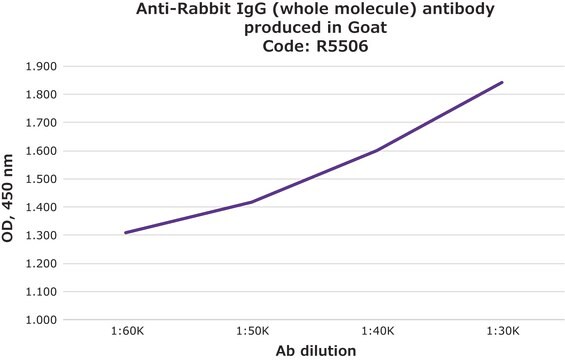MABN788
Anti-nitrated Hsp90 Antibody, clone 44.23
clone 44.23, from mouse
Synonym(e):
Heat shock protein HSP 90-beta, Heat shock 84 kDa, HSP 84, HSP84
About This Item
Empfohlene Produkte
Biologische Quelle
mouse
Qualitätsniveau
Antikörperform
purified immunoglobulin
Antikörper-Produkttyp
primary antibodies
Klon
44.23, monoclonal
Speziesreaktivität
rat
Verpackung
antibody small pack of 25 μg
Methode(n)
ELISA: suitable
dot blot: suitable
immunohistochemistry: suitable (paraffin)
western blot: suitable
Isotyp
IgG1κ
UniProt-Hinterlegungsnummer
Versandbedingung
ambient
Posttranslationale Modifikation Target
unmodified
Angaben zum Gen
rat ... Hsp90Aa1(299331)
Allgemeine Beschreibung
Spezifität
Immunogen
Anwendung
Neurowissenschaft
ELISA Analysis: A representative lot detected nitrated HSP90 in ELISA applications (Ye, Y., et. al. (2007). J Biol Chem. 282(9):6324-37).
Dot Blot Analysis: A representative lot detected nitrated HSP90 in Dot Blot applications (Franco, M.C., et. al. (2013). Proc Natl Acad Sci U S A. 110(12):E1102-11).
Immunohistochemistry Analysis: A representative lot detected nitrated HSP90 in Immunohistochemistry applications (Franco, M.C., et. al. (2013). Proc Natl Acad Sci U S A. 110(12):E1102-11).
Qualität
Western Blotting Analysis: 0.25 µg/mL of this antibody detected nitrated HSP90 in PC12 cells treated with pyroxynitrite.
Zielbeschreibung
Physikalische Form
Lagerung und Haltbarkeit
Sonstige Hinweise
Haftungsausschluss
Sie haben nicht das passende Produkt gefunden?
Probieren Sie unser Produkt-Auswahlhilfe. aus.
Lagerklassenschlüssel
12 - Non Combustible Liquids
WGK
WGK 1
Analysenzertifikate (COA)
Suchen Sie nach Analysenzertifikate (COA), indem Sie die Lot-/Chargennummer des Produkts eingeben. Lot- und Chargennummern sind auf dem Produktetikett hinter den Wörtern ‘Lot’ oder ‘Batch’ (Lot oder Charge) zu finden.
Besitzen Sie dieses Produkt bereits?
In der Dokumentenbibliothek finden Sie die Dokumentation zu den Produkten, die Sie kürzlich erworben haben.
Unser Team von Wissenschaftlern verfügt über Erfahrung in allen Forschungsbereichen einschließlich Life Science, Materialwissenschaften, chemischer Synthese, Chromatographie, Analytik und vielen mehr..
Setzen Sie sich mit dem technischen Dienst in Verbindung.